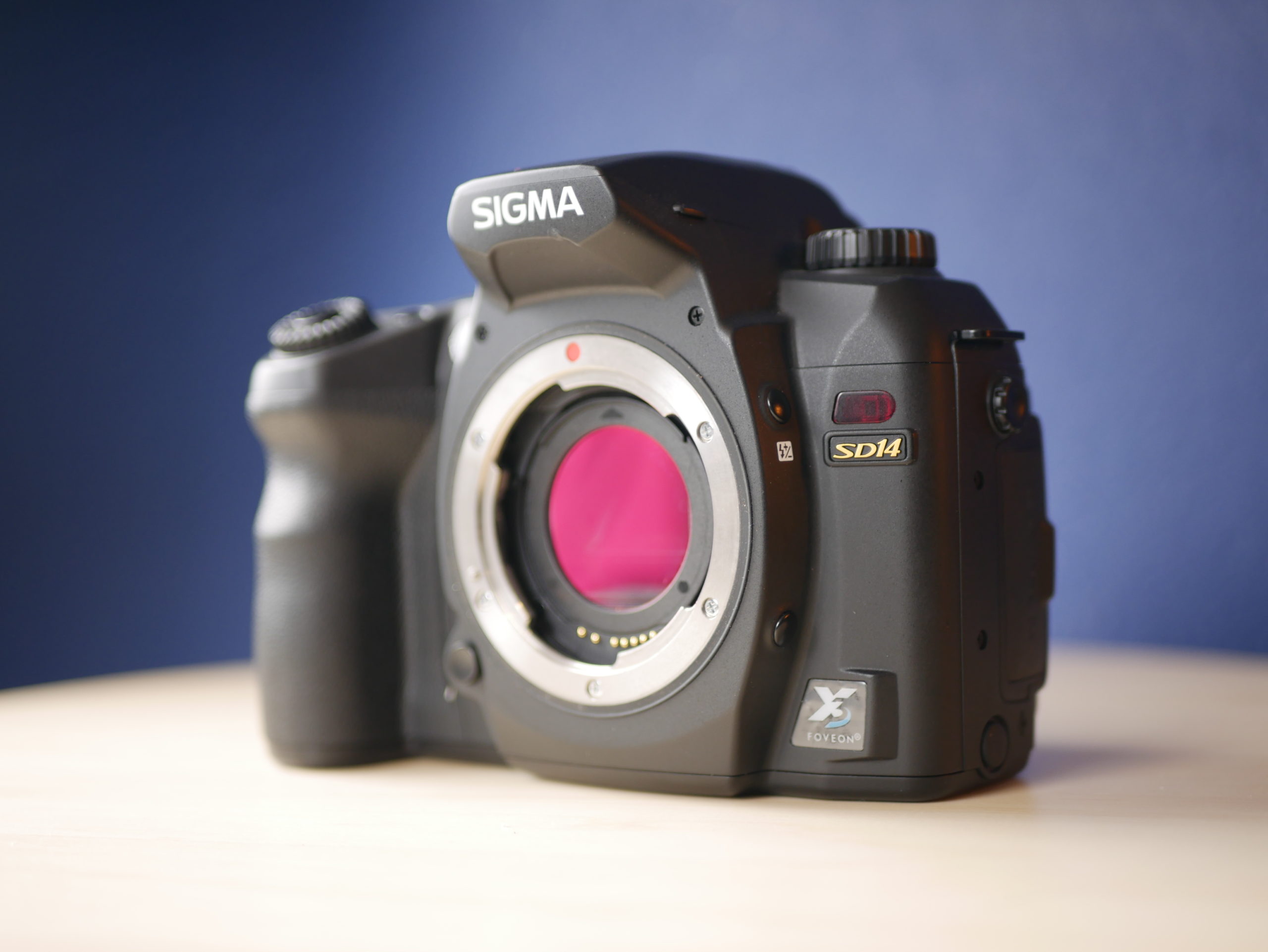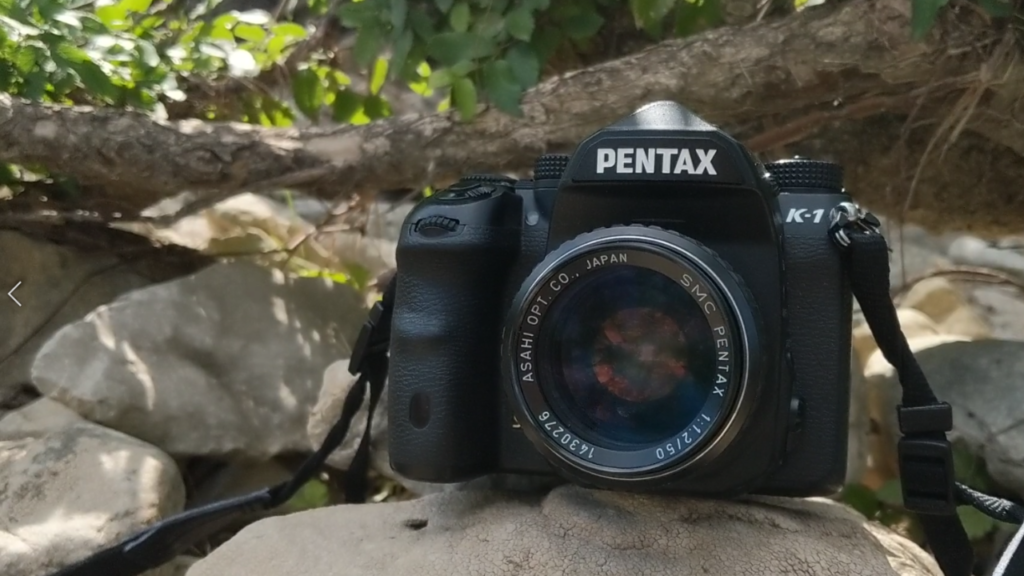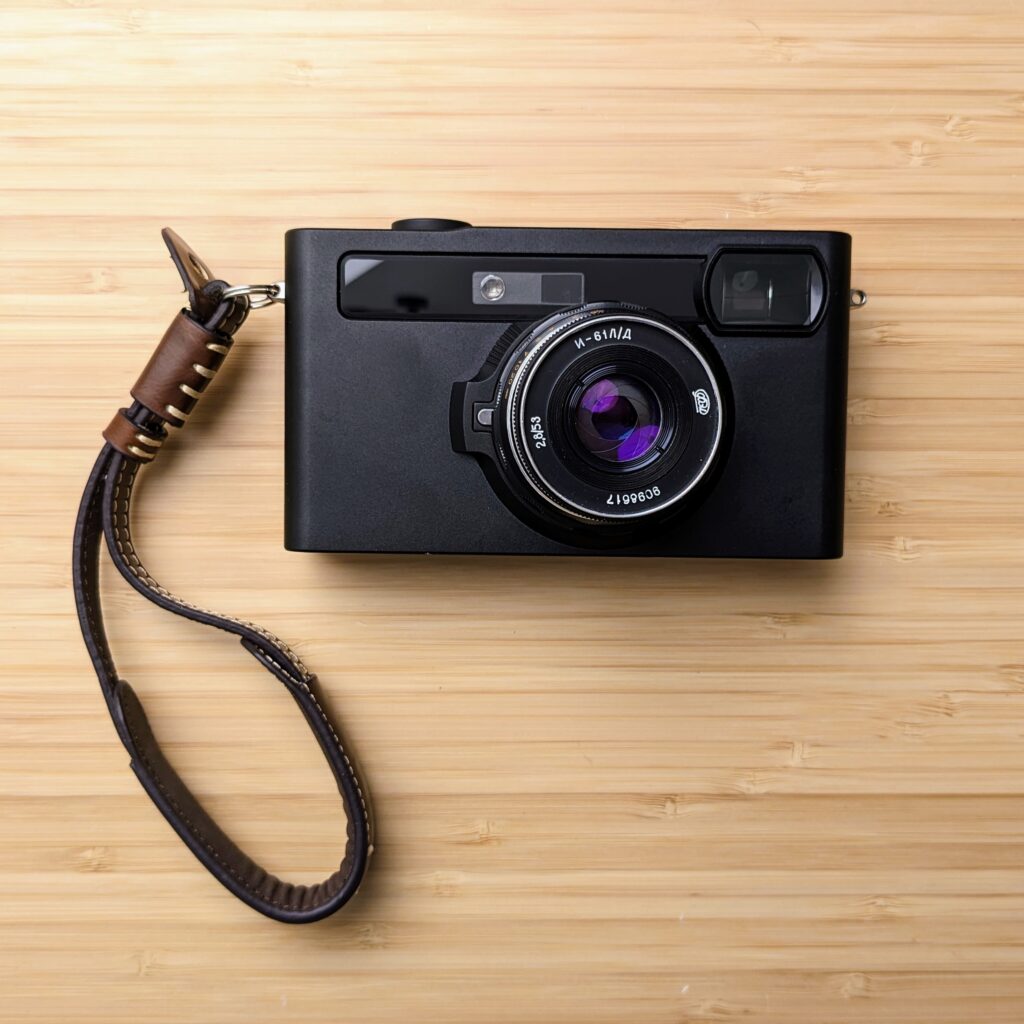I always hear about “Foveon colors.” About how Foveon sensors produce the best detail and the most accurate colors. I probably should know better by now than to chase every hyped camera I hear about, but I don’t, and I do. So, naturally on my quest to try out interesting old digital cameras I knew an old Foveon DSLR was in my cards. It just so happened that after only a few months of searching, a large lot of lenses included with a pristine Sigma SD14 found it’s way into my search alerts and I snagged it up. Here’s my thoughts now after using it for six months.
The Sigma SD14 body overview
Even on the outside the Sigma SD14 is very different than any other DSLR released in and around 2007. The camera takes a more boxy approach to DSLRs, inheriting the same design ethos from previous models. The grip is smaller and less comfortable than say a Nikon D80 or Canon 40D of the time. There is a front control dial but not a rear one. In fact, the controls may be the strangest I’ve ever used on a DSLR.
There’s a top dial that controls shooting modes, including manual, priority and program modes. Another dial on the left-hand side of the camera turns the camera on and selects single frame, burst, timer, etc. To change your settings within a manual mode you must press a function button on the left side of the camera and watch the LCD screen until the setting you wish to choose appears. Then, while holding down on the function button, you spin the front dial to toggle that setting. These are settings anything from the beep volume to metering setting. It’s an odd assortment of settings combined into one area, and an awkward dance to change them.
Going down the back of the camera there are several buttons that are tied to only one thing. A button to hop into the rather empty menu system, and a button to hop into a four way menu to change ISO, white balance, resolution and image output. Additional buttons for reviewing images, seeing a general overview of setting information, and a few others scattered here and there. While it does seem a little chaotic compared to more intuitive systems, the one saving grace is that the menu system is extremely simple, with only a few options available for change.
It’s worth mentioning that the viewfinder is rather small and uninspiring, but gets the job done.
Read more specs about the Sigma SD14 along with user reviews on classiccameradatabase.com
What makes the Sigma SD14 special?
The real reason anyone would pick up this camera, back in 2007 or in 2022, is because of its special sensor. The Sigma SD14 uses an improved version of the original Foveon X3 sensor released with the Sigma SD9. It is a crop sensor, slightly smaller than most APS-C format sensors at about a 1.7x crop factor.
Foveon sensors use a very different approach to determining color information than the more common bayer sensor. Here’s a link to a nice concise article on Foveon sensors, but the gist of it is that instead of using a color filter array, the sensor is measuring color by the depth the light reaches. This allows the camera to skip the problems that color filter arrays introduce.
In practical terms, you get a file that ends up looking pretty different than any other camera. And indeed, this was the most difficult part of this camera to get used to. At first I was unsatisfied with the colors of the files, finding them really tough to work with. But as time went on and I became better acquainted with the camera, I came to really appreciate the potential aesthetic. It just takes a bit more work than you may be typically used to.
Removable hot mirror filter
One of my favorite things about the Sigma SD14 and something that makes it unique beyond its Foveon X3 sensor is that once you take off the lens you have access to a removable hot mirror filter. This is the filter that blocks infrared light from hitting the sensor, and in virtually every other camera is affixed directly over the sensor. But not here. This means that with a quick flip you are now capturing infrared. This is less of a practical feature and more of a nerdy one, but the nerds here will appreciate this with me. It’s dang cool.
Foveon X3 sensor performance
I can’t bring up a Foveon sensor camera without talking about it’s high ISO performance. This camera is a base ISO camera only, as noise degrades the image quality heavily at anything above it. You need to know this before you buy the camera, and plan for it when you go out to shoot. But you really can get used to it. Think tripod, tripod, tripod.
Video review of the Sigma SD14
See more photo samples of the Sigma SD14 along with showing off the controls in my video review below.
Closing thoughts
It’s hard to recommend this camera nowadays. Their relative rarity has caused prices to shoot up beyond what I think you should pay for one. Even if you do find one for a deal, the camera is slower than the competition, can’t shoot at higher ISOs without making a mess, and produces files that take a lot of work.
Now that I have that big warning out of the way, and I really mean it, I will tell you that this camera has grown on me a lot. Once I learned to slow down in the process and get to know it a little better it was rewarded me with some really nice images.
Sigma cameras have a fascinating history, and the amazing thing is they are still going. Just this last month I read news that a new generation Foveon sensor is planned to be released later this year or next. I love that this niche system has a dedicated enough following to keep moving forward, and that Sigma hasn’t dropped it. And I think it’s super cool to have one of the cameras that started it all.
Enjoy the photos from the Sigma SD14 bellow. Until next time, happy snappin’




